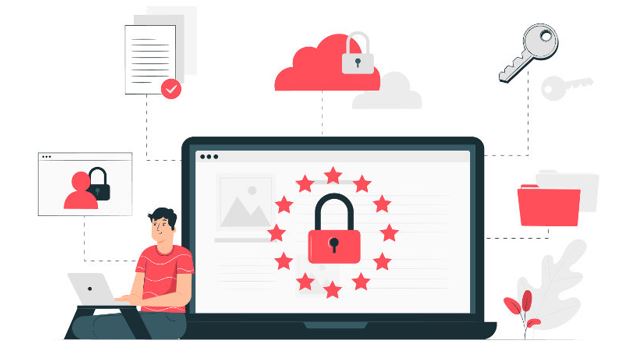How businesses should train workers to help secure their e-commerce operations? Cybersecurity has to be the prime concern if you are operating an e-commerce company that operates almost entirely online. You take in a steady stream of consumer data each day.
If criminals get a hold of the data and are recognized as an organization that allows it to happen, the company will undoubtedly lose.
While hackers will try several different techniques to reach unlawful entry, the social manipulation scam deserves to be given specific attention.
It is a technique that attempts to take responsibility for personal error by leveraging an individual’s faith or interest.
They unintentionally click on a connection or otherwise give hackers access to classified networks.
Many of these techniques, like data theft, are well known, but the concern is that individuals often aren’t educated enough on what to prevent. Everybody in your enterprise has to be on the one level to keep your business safe and valued.
Know the Risks
When you warn your workers about social manipulation scams, by warning them about the threat that will come to your business if they are not vigilant, you can effectively threaten them.
The loss to the image of your business is the most significant. We have also heard about the significant hacks of privacy that have struck business companies like Target and Equifax, and now years after, Freelance Web Designer Dubai consumers recall these risks.
They need to rebuild their image, recover their files, and put new safeguards if an organization fell prey to a cyber attack.
The estimated cost of going back to usual is north of $3 million to do all this.
Can you rebound from that with your e-commerce business?
The problem is that if a social control attacker gets and hackers obtain access to your device, they will damage you in several various ways.
They will release ransomware once inside, lock down the networks and leak data back to the perpetrators.
Hackers will also mount encryption, which seals up your system and all your files before giving the hackers a hefty amount.
Then there is malware detection, which monitors the user’s behavior and can view more and more of their soft and professional computer systems by using their log-in data.
Normal Scams
It is essential to educate your workers on the various types of social attack vectors and the indications they need to be informed of, now that you know what is at stake.
Such fraud, such as the tactic called “baiting,” seeks to take advantage of a victim’s attention.
One baiting strategy entails a hacker placing a USB drive in a common area of the workplace to expect an individual to pick that up, connect it to their device, and install a virus unwittingly.
Baiting may also turn into a hacker putting an ad online or submitting a free music message or a video game to lure the Web Designer Dubai user, and the virus is activated when they click the connection.
There are even more specific targets, like the watering hole.
By investigating their browsing history or social media pages, a hacker gets wind of a domain that a person wants to visit.
Then, for example, there is the cyber-attack, one of the criminals’ most widely used techniques.
Spam attacks are simply messages received to take advantage of the recipient’s fear or weakness.
E.g., during the COVID-19 pandemic, several malware emails were sent with guarantees of vaccinations and career guidance for research. However, instead of useful material, they contain malicious software that unleashes a virus and malware on their device when clicked or opened.
Development must fall back to upholding the principle that workers cannot click on any link or connection for identity theft and many other social engineering types, unless they are acquainted with the recipient, and they know it is coming.
Some red flags correlated with spam scams include:
The sender seems authentic, but their email account is from a public account like Gmail or Yahoo.
Safeguards
Now that the employees are trained in standard social manipulation techniques, they have to realize what they should do to defend their structures and minimize the harm if they fall prey.
It begins with correct passwords, which can be a complex mix of letters, numbers, and punctuation marks updated bi-annually.







